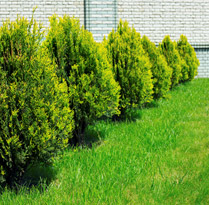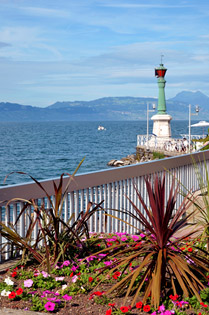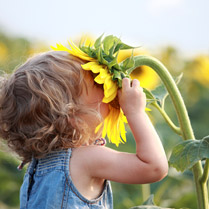When changes to your water supply or the natural weather patterns occur, it can trickle into larger, more serious consequences, such as a shortage in water supply and water bans, which can ultimately affect your ability to nourish a colourful and flourishing garden.
 Summer fun so often revolves around cooling down around the pool, pond, lake, or sprinkler, (or keeping your gardens healthy for entertaining), and your water bills and the environment could benefit from more sustainable soaking endeavors. If you like relaxing in your mighty garden but are interested in a more water-wise approach, why not go for a drought-tolerant garden?
Summer fun so often revolves around cooling down around the pool, pond, lake, or sprinkler, (or keeping your gardens healthy for entertaining), and your water bills and the environment could benefit from more sustainable soaking endeavors. If you like relaxing in your mighty garden but are interested in a more water-wise approach, why not go for a drought-tolerant garden?
Drought-tolerance, or ‘xeriscaping’, is a recent garden style first seen in the arid western regions of the United States. But it’s gaining growing support as a practical means of both relishing the beauty of gardening, while also maintaining a conscientious effort to minimize water usage. To receive notice as a drought-resistant plant, a plant needs to be able to thrive in dry conditions where water is much more scarce than Ontario..
If you’re planning a drought hardy garden, it is best to place drought-resistant plants in close proximity to each other, to get the most out of any watering you do. We also recommend the plants sit in full sun at least part of the day to promote healthy growth..
Drought resistant choices to help your garden live on
 Before purchasing any plants, you have to know the ones that will stand up to your environment and look great with your design. You can always ask the experts at Dutchman’s, or sit back and have us do it all for you. But if you want to have at it yourself…
Before purchasing any plants, you have to know the ones that will stand up to your environment and look great with your design. You can always ask the experts at Dutchman’s, or sit back and have us do it all for you. But if you want to have at it yourself…
- Grasses:
- Bluestem, Tufted hair grass
- Evergreens:
- Junipers (there are so many species of these!)
- Yuccas—similar appearance to a desert plant. Once planted and settled, they usually do not need to be watered. Their roots grow extremely long and seek out hidden sources of food.
- Trees and Shrubs:
- Honey-locust (tree), Buckthorn (large shrub), Honeysuckle (smaller shrub)
- Annuals:
- Sunflowers, Amaranth, Zinnia
- Perennials:
- Characterized by their either waxy or furry leaves, which retain a lot of moisture. Some examples include: Daylilies, Lavender, Thyme, Blanket flower, Marguerite Daisy, Baby’s breath, Sweet pea, Peony, Lamb’s ears, Black-Eyed Susan
When should you water?
 There are specific water and soil guidelines to help ensure the best results for draught-resistant plants.
There are specific water and soil guidelines to help ensure the best results for draught-resistant plants.
- Use more organic matter (i.e. compost, manure) in your soil mixture. These components hold moisture for long periods
- Avoid evaporation by only watering plants in the early morning or late evening.
- In the first year, after the soil and plants have been accommodatingly established, many drought-resistant plants can go without water for a solid week. After two years and beyond, when the plants are totally at home, watering can occur every two weeks.
Creating a drought-resistant garden is a great way to be water-wise and Earth friendly while saving money and also enjoying the pleasing array of colourful sights and sweet smells this type of garden has to offer. Try something new, both aesthetically and environmentally, and you can be sure a drought-resistant garden and its low maintenance requirements will give you a new perspective on garden life.
Give us a call today to learn more about this landscapers growing trend.

